I’ve written before about the British camera industry. I’ve done a review of a medium format SLR from a company called ‘Aeronautical General Instruments’ (AGI). AGI were based in Purley Way, Croydon. They produced AGILux cameras and lenses there. AGI claimed to produce everything in the one factory, even constructing their own lenses and shutters. As well as the medium format Agifold and Agiflex cameras AGI produced a 35mm camera called the ‘Agimatic’.
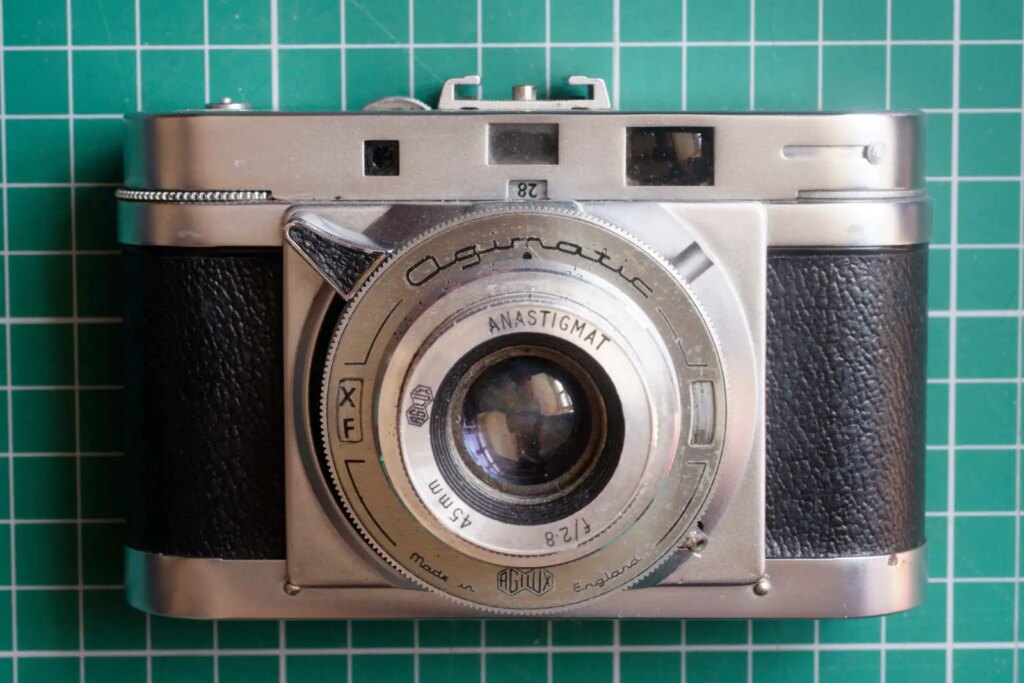
Agimatic
The Agimatic was launched in 1958. The camera featured an uncoupled rangefinder, an extinction meter and interchangeable lenses. It also took a novel approach to winding on and rewinding film. 1958 was when the export controls came off in the UK, so AGI were aware that they were competing in an international market.
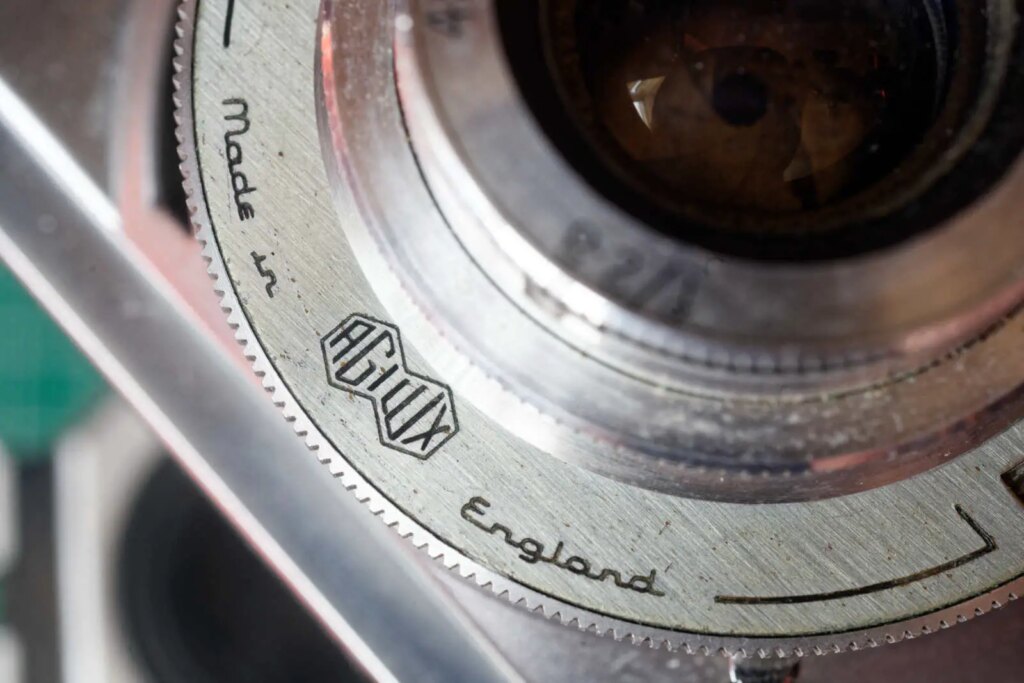
Haven’t I seen you somewhere before?
This is a novel camera, but there are some aspects that strongly remind me of a Braun Super Paxette. These include general body shape, the slide-off body, and the use of hinged pressure plates. Both cameras were rough contemporaries. There is often debate about who-made-what and who-copied-who between companies. In this case I was able to directly compare.
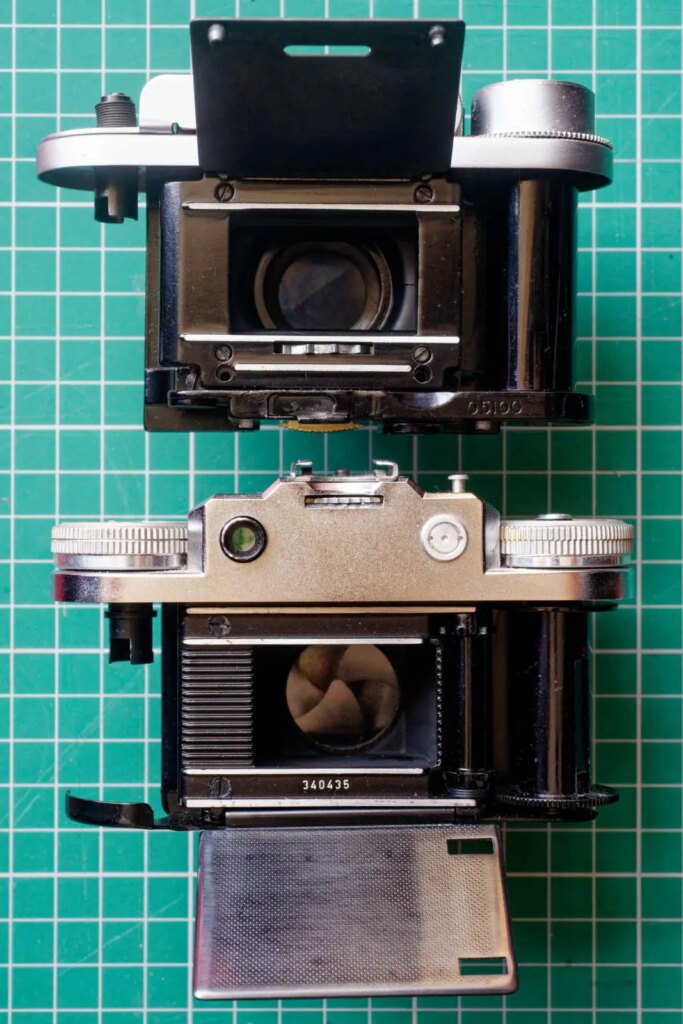
It is almost like someone was trying to make things just different enough to get away with it. The pressure plate on the Braun seems to hinge in a more logical way. The Agimatic has a suspiciously unused mounting point at the bottom of the camera. It looks like they were considering putting in a hinged cage like the Paxette has. On the balance of probability, I was inclined to think it was the German company that was being imitated/flattered. Later on I found out that the the Super Paxette was actually introduced in 1956, two years before the Agimatic.
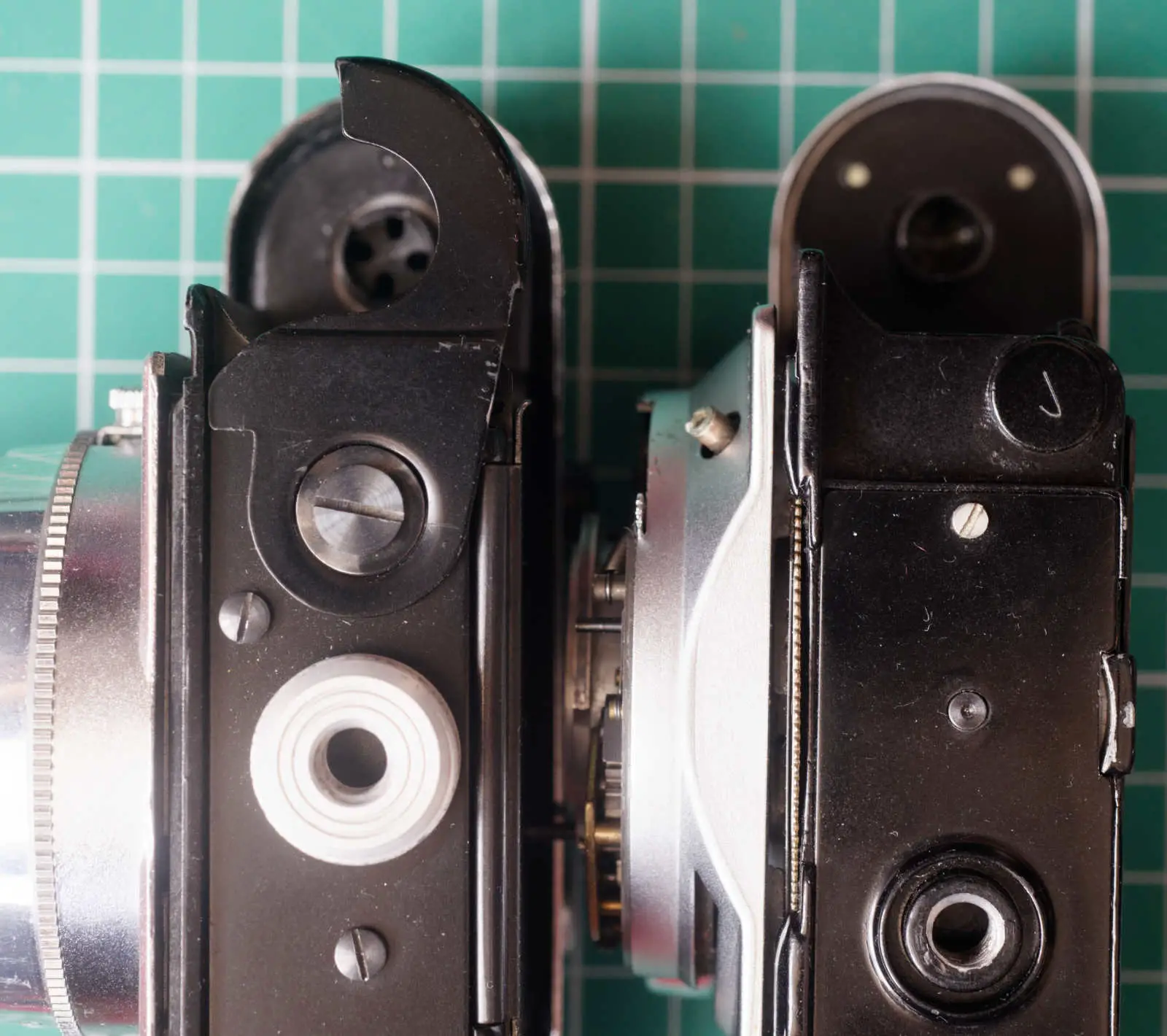
It wasn’t all one way though. Braun made a follow-up version of the Super Paxette which featured a rewind lever system very much like the one on the Agimatic. As that camera was released in the same year as the Agimatic, it may point to some sort of cross-licencing arrangement.
The Agimatic
Loading
Film is loaded by sliding the back of the camera off downwards. It is held in place by a neat little catch on the back of the camera. This gives easy access to the cassette chamber and take-up spool. The film passes under a hinged pressure plate. The plate is pressed against the gate by springs on the back once it is in place. The film is pulled by a single large sprocket placed centrally below the film gate. Be warned: you need to remember to reset the film counter wheel (which counts up) when you load the film as the control is covered by the base/back.
Interchangeable lenses
The Agimatic takes interchangeable breech-lock bayonet lenses – however, only two variants were made for this camera. The standard lens was the 45 mm f/2.8 Anastigmat, but there was also an 85 mm f5.5 telephoto. You release the bayonet with a little catch on the left side of the lens mount and directly remove one lens ready for replacement by the other. The lenses fit over a pin, with a small flange rotating to hold the bayonet tabs in place.
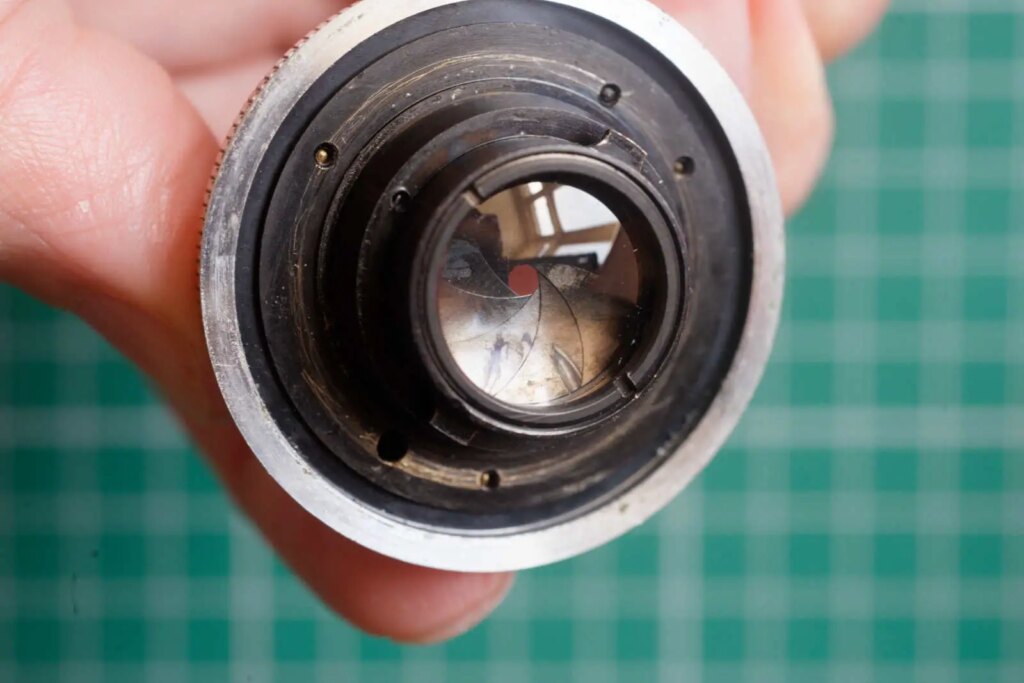
When the 85 is mounted, you can slide a mask over the viewfinder restricting field of view. Each of the little lens units has its own many bladed diaphragm which can be set at intermediate values if required.
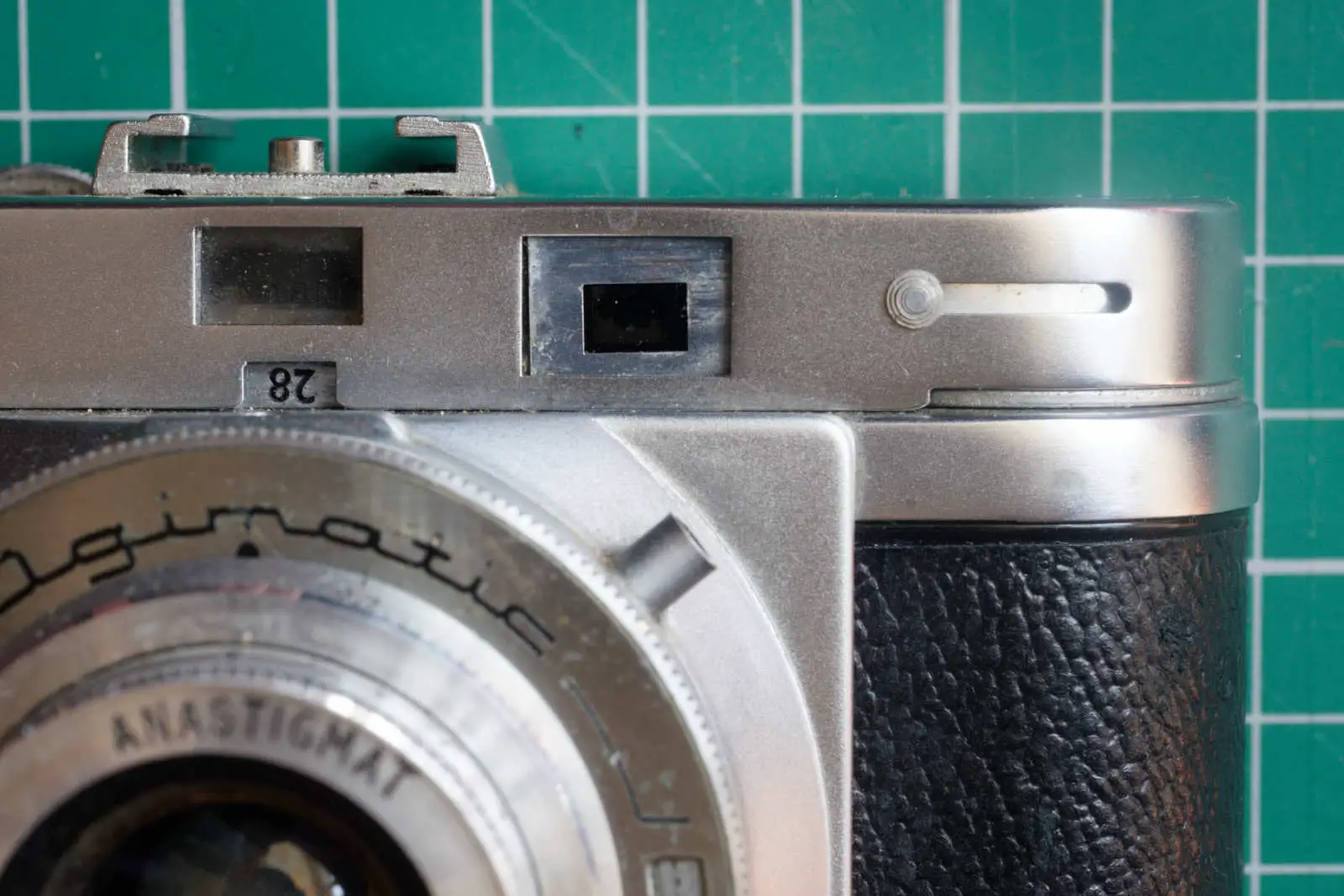
Viewfinder and uncoupled rangefinder
The viewfinder is not the biggest in the world, but the viewfinder patch for the uncoupled rangefinder is reasonably clear – you simply align this using the little wheel at the back of the top-plate, then transfer that value (in feet) to the lens.
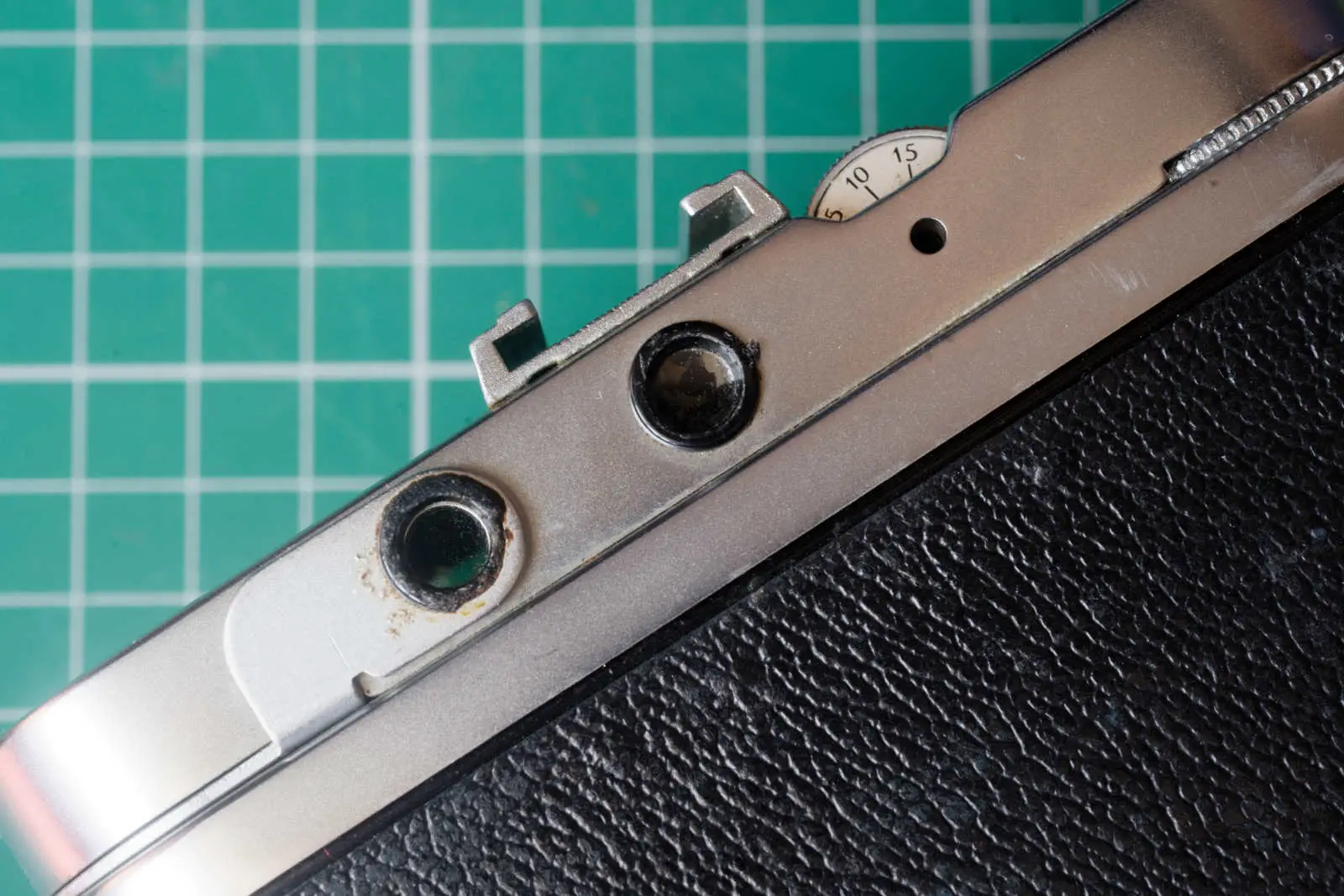
Shutter release and winding
The Agimatic features a long throw wind-on lever on the front of the camera for operation with the fingers of the right hand. The first movement of this lever fires the shutter. Further movement towards the base of the camera winds the film on to the next exposure, re-cocking the shutter at the bottom of the throw. AGI described this as a ‘4-in-1’ control. Releasing the shutter, winding the film, advancing the film counter and cocking the shutter.
It is reputed that this allows for the camera to be used for rapid sequence shots, up to 2 frames a second. I’d be nervous of tearing the film.
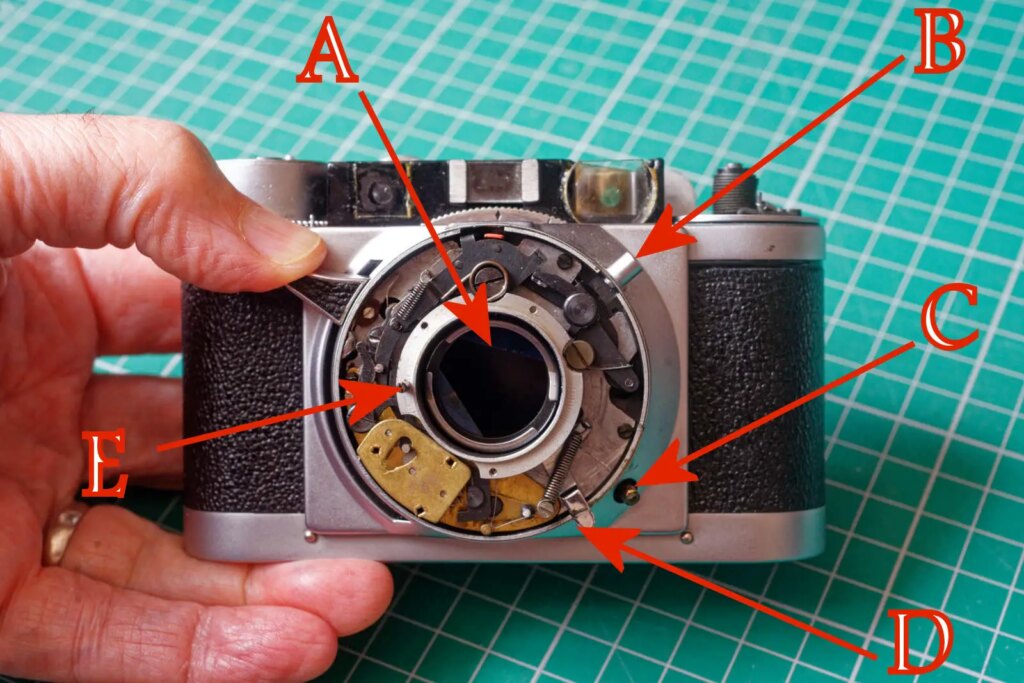
Shutter speeds
The Croydon made shutter has speeds from 1 second to 1/350 plus B. It is mechanical but can be set between values.
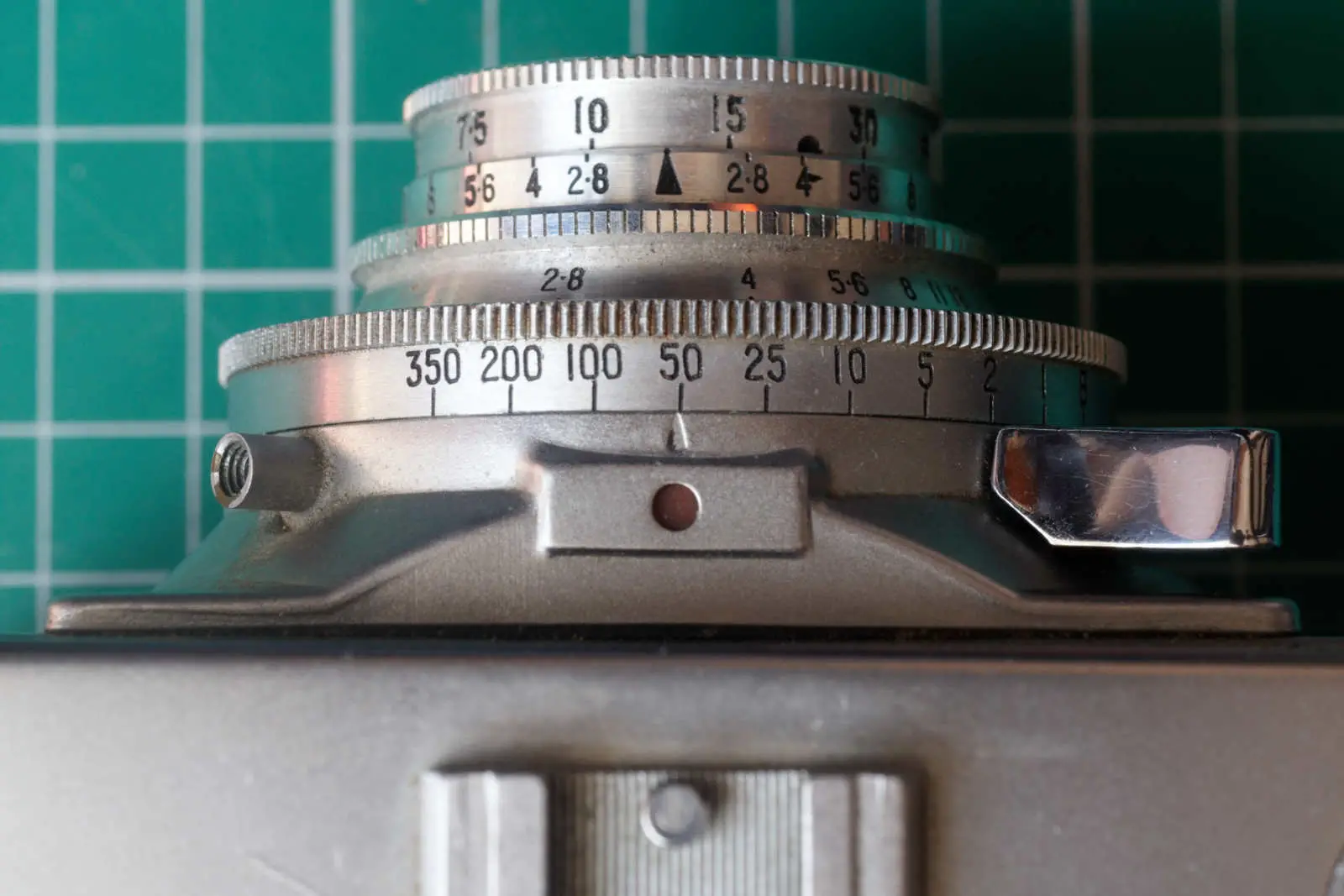
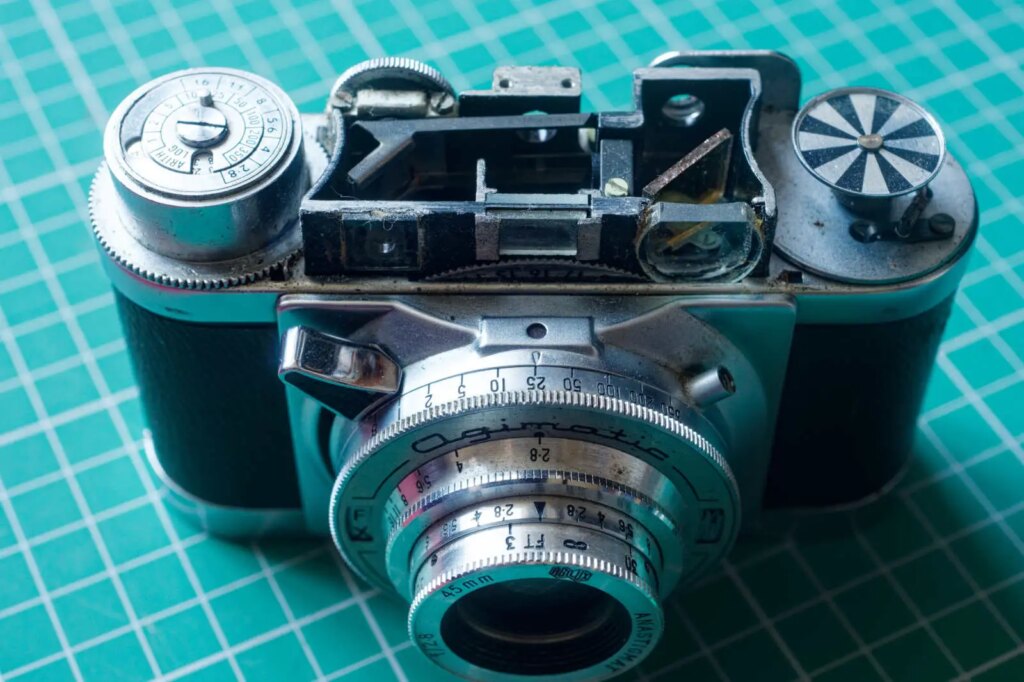
Film rewind
The Agimatic rewind is a little unconventional too. There is a lever on the left whose end is perforated so that you can look through it into the viewfinder. Ratcheting this lever back and forward draws the film back from the right-hand-side of the camera, back into the film cassette.
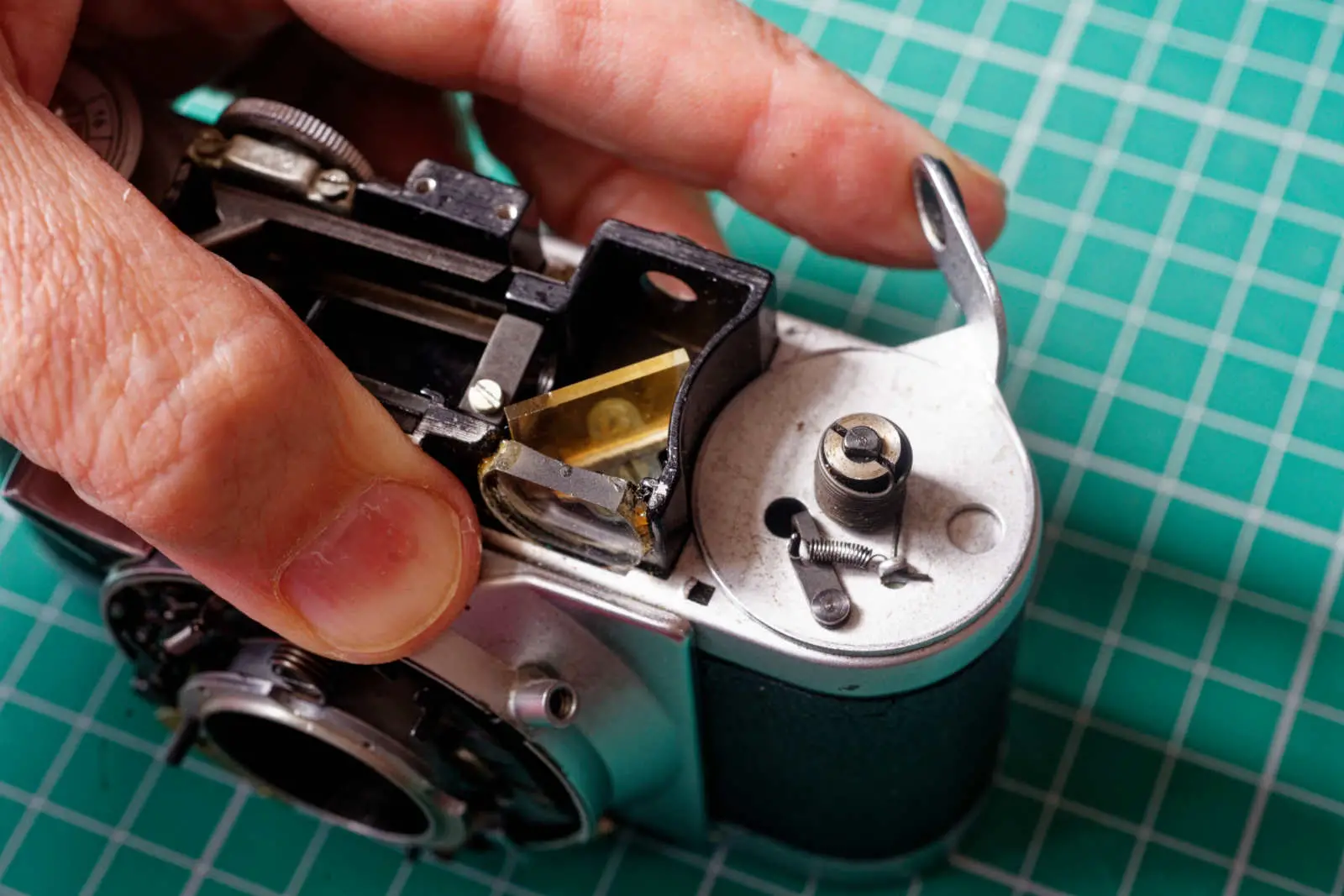
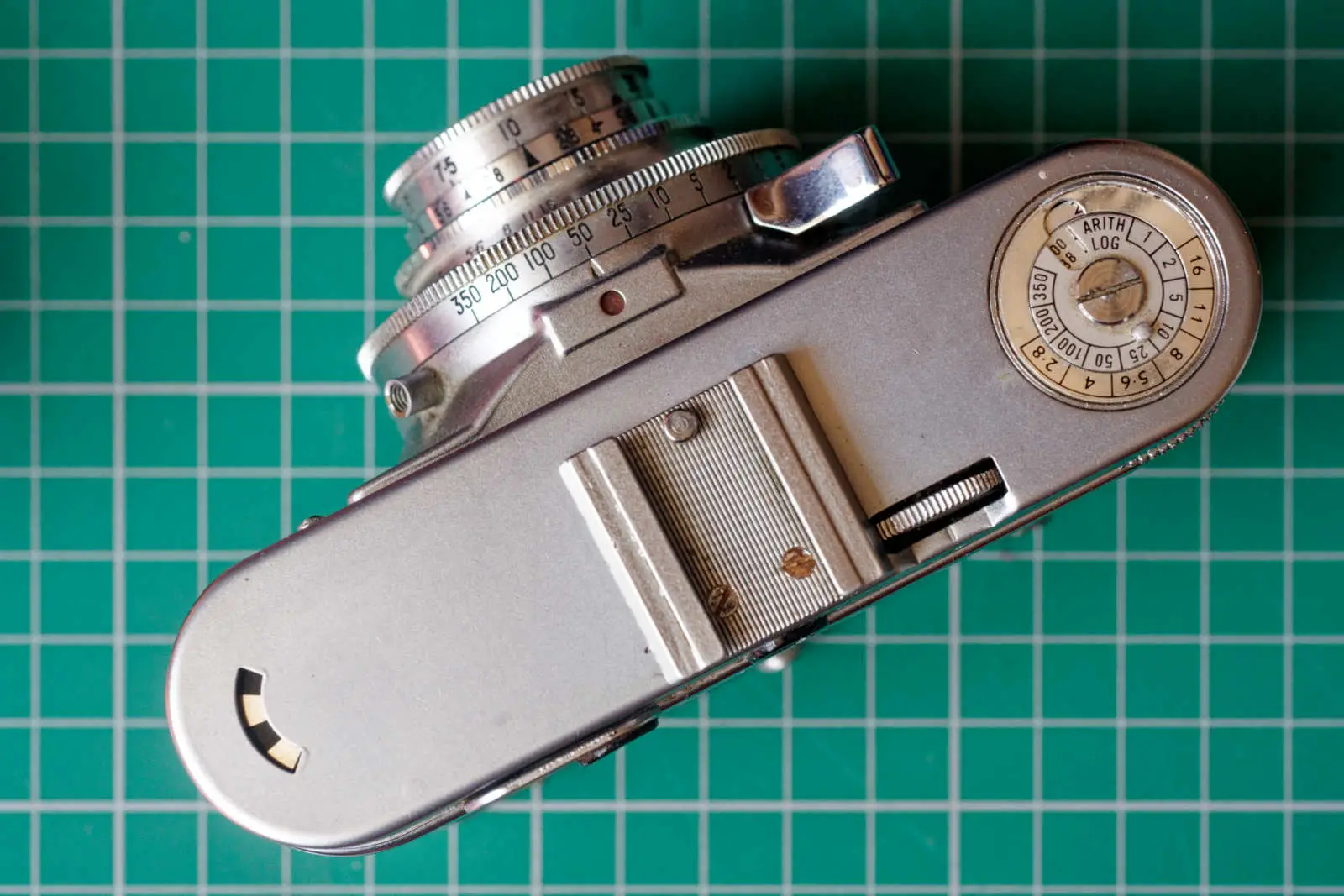
Extinction meter
The Agimatic features an extinction meter to aid exposure. When you look through the window in the centre of the camera, you see a range of numbers, each getting a little harder to see. It would seem that you pick the highest number that can be clearly seen and transfer that number to the little calculator that sits where you would expect a wind-on lever to be. The calculator then gives you a range of shutter speed and aperture combinations.
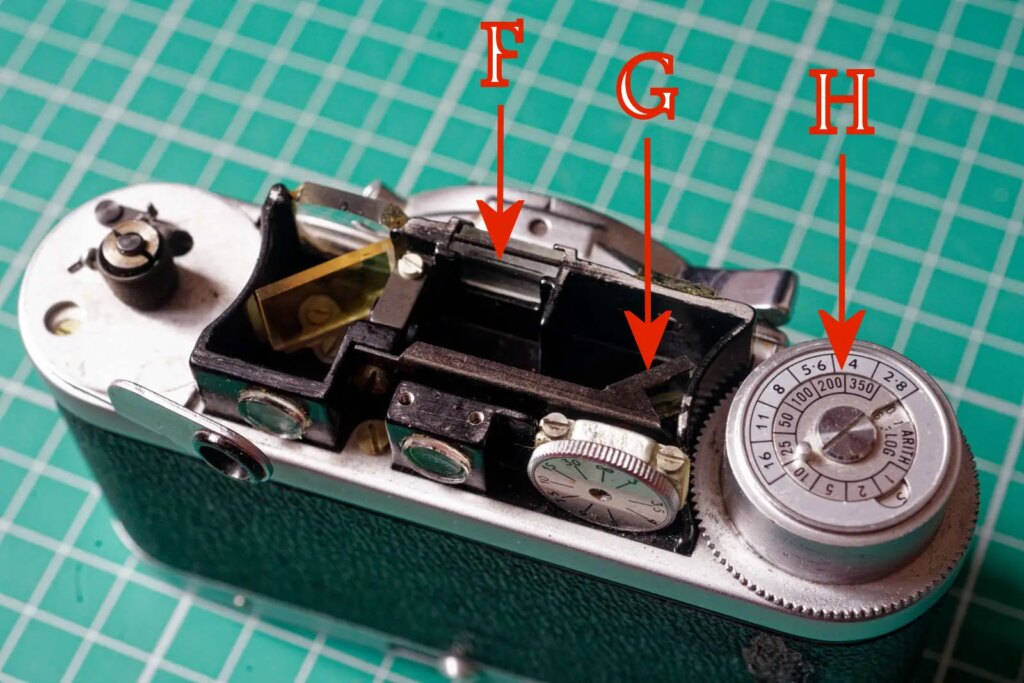
In use
I find the long throw of the shutter-release/wind-on lever a little unnatural. However, the camera also supports an initial press to release the shutter followed by a second, longer press to wind the film, which was what I settled to. My preference may well be down to simply being used to a conventional setup over the course of 50 years. I was pleasantly surprised with the results from the in-house ground lens too.
I also tried using the extinction meter, but found myself preferring to use a separate light meter.
The camera itself is a nice size, fitting easily into a jacket pocket. Although it is pretty much identical in size, somehow it doesn’t feel quite as tiny as the Super Paxette.
Rewinding
The Agimatic behaved impeccably while winding on, giving regularaly spaced negatives throughout the film. The one issue was with rewinding. Once the lever has finished pulling the film past the gate, the drive sprocket is free. The rewind lever can then pull film back into the cassette. On my copy the drive sprocket is a little stiff and there were times during the re-wind when it started to make nasty noises.
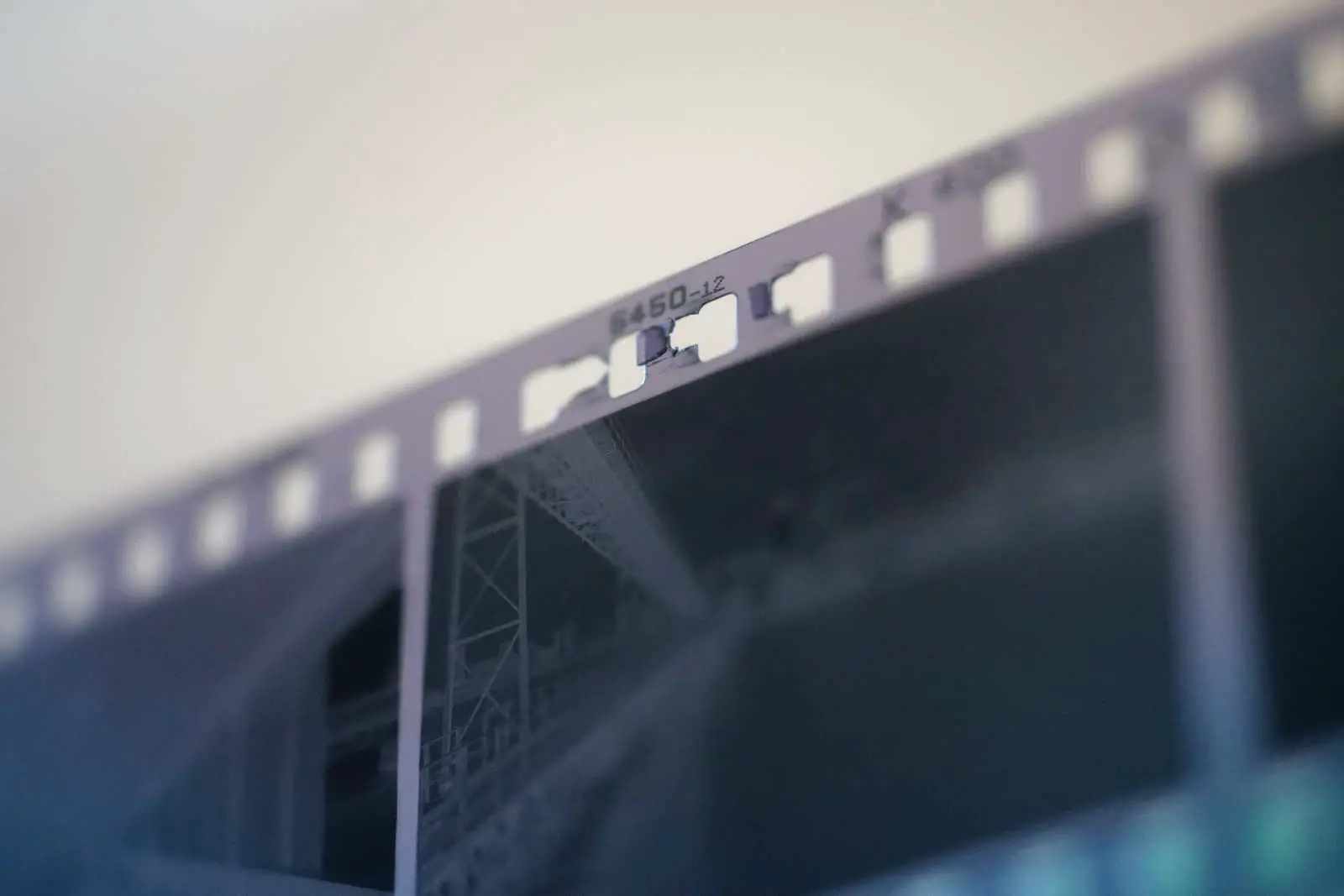
Some of the sprockets on the film show damage as the film has been dragged against the resisting teeth of the drive wheel. Not bad enough to tear the film, but enough to cause worry about what the state of the film will be when the back is opened. For the next film I think I will take the back off in a dark bag and wind the film back without it being pressed against the gate and the sprocket wheel.
Shutter
In a way it is nice that AGI made all the parts in the same factory, but the two rough-hewn blue steel blades of the AGI shutter seem a bit brutal and crude in comparison to the fine multi-bladed leaf shutters of the competition. The slow speeds (below 1/30) don’t seem that reliable on the AGI, but the same is true of the Prontor on the Super Paxette – and on other cameras of similar vintage in my possession. Slower speeds just seem to gum-up far more on leaf shutters that are not regularaly used.
Pictures!
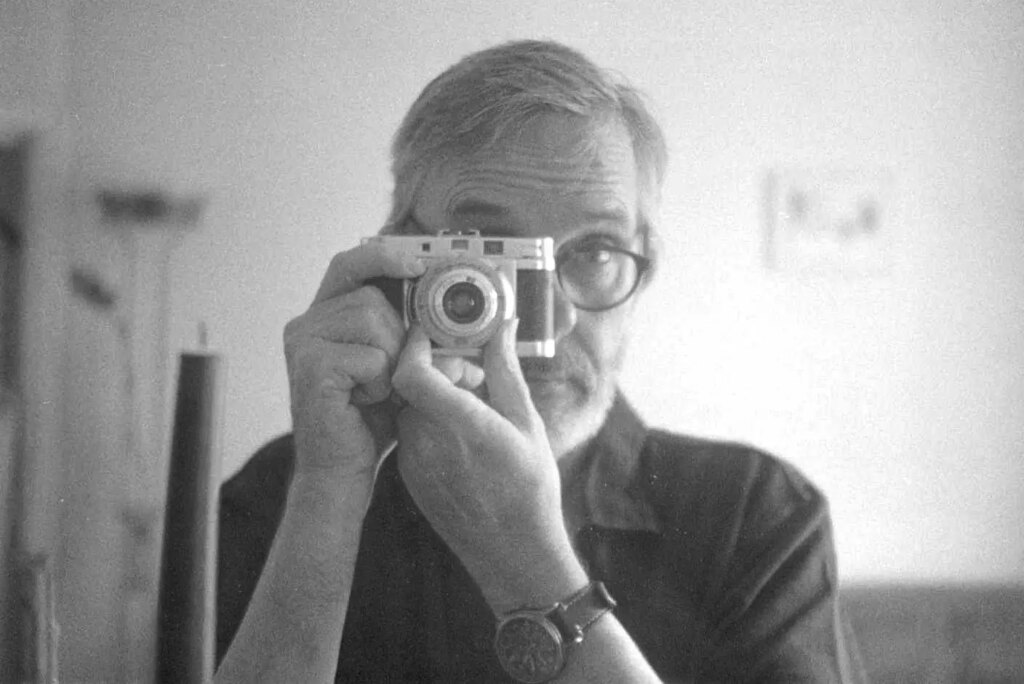
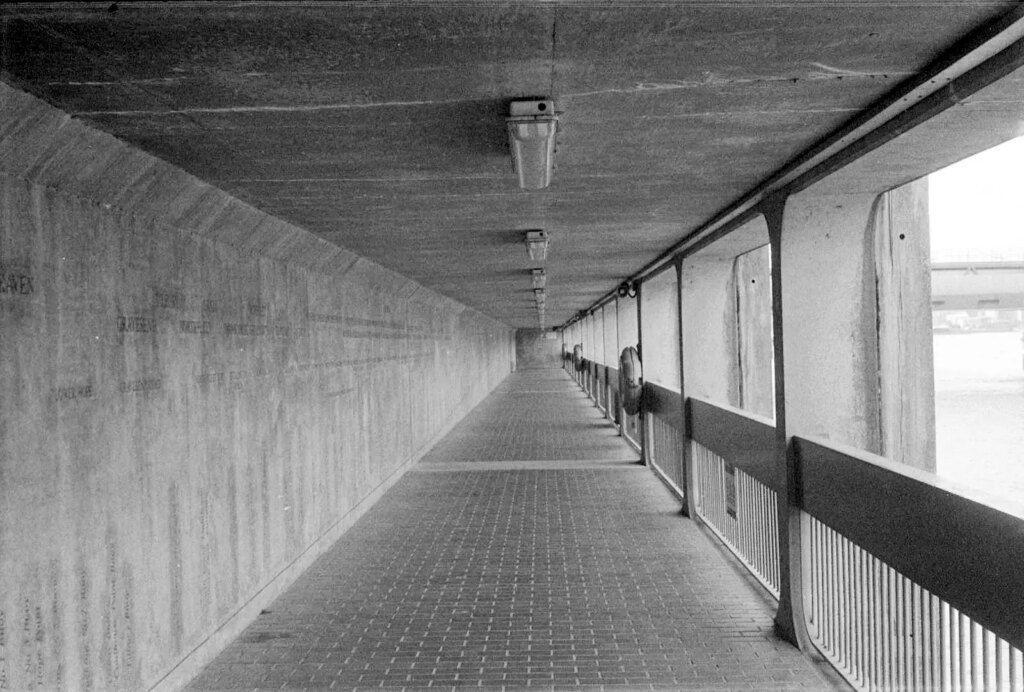
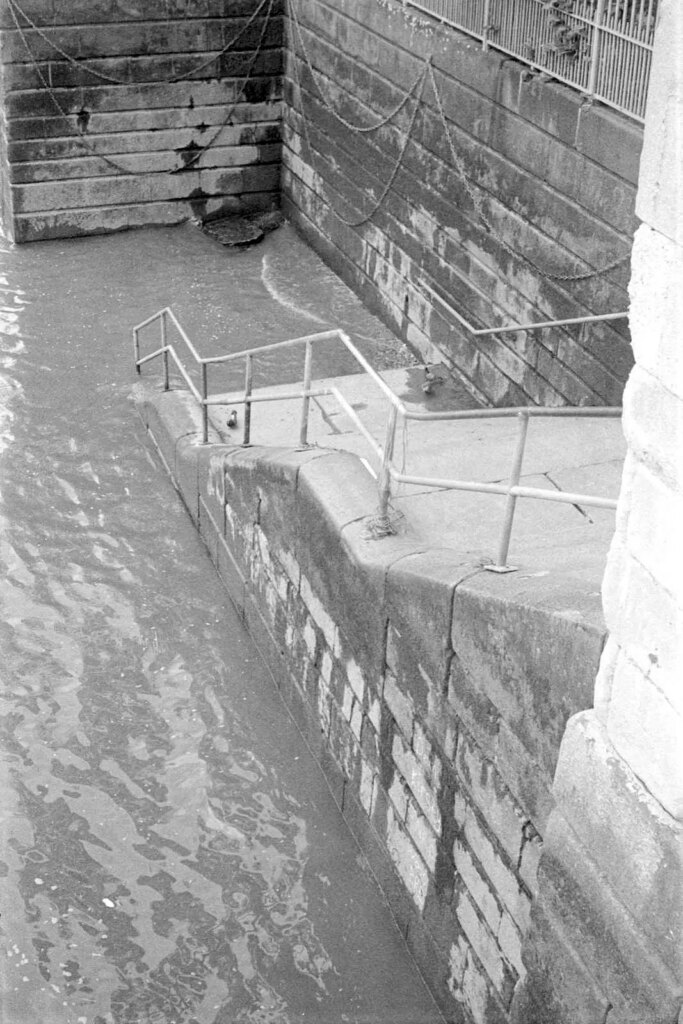
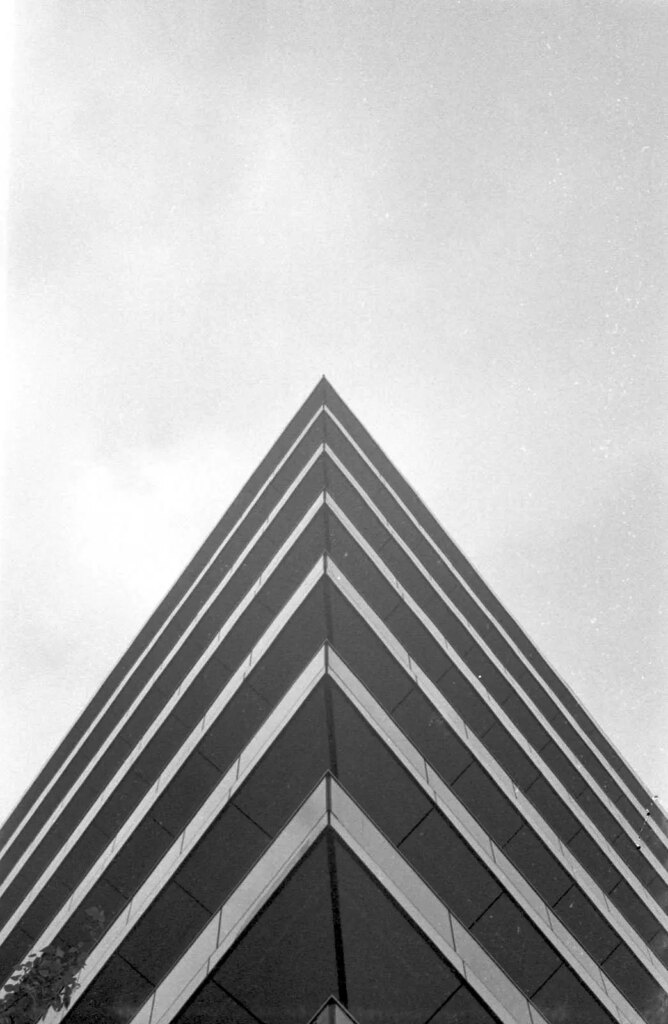
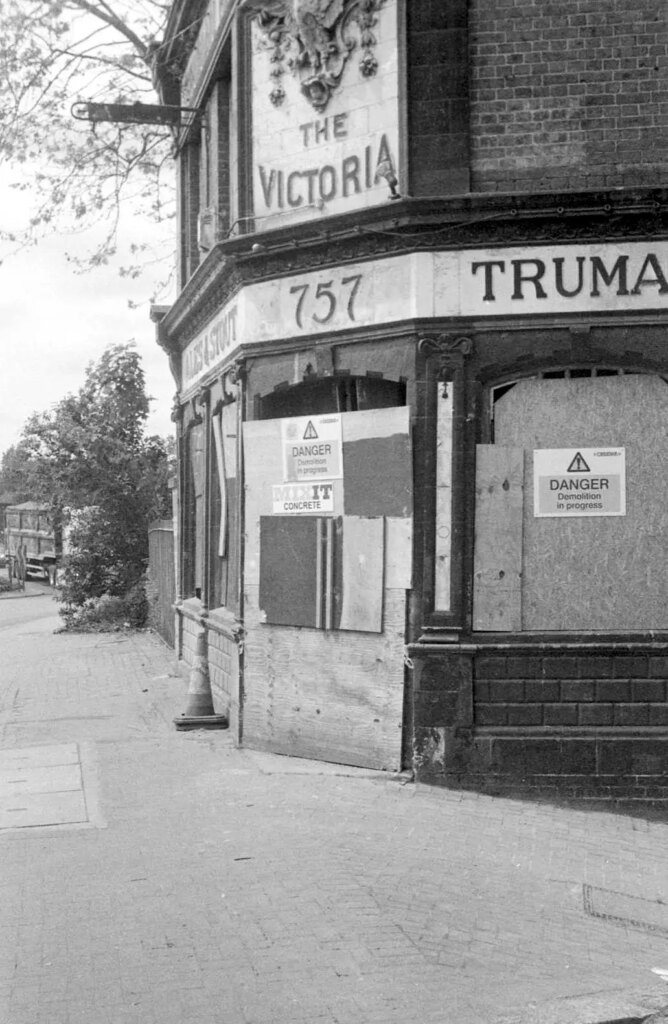
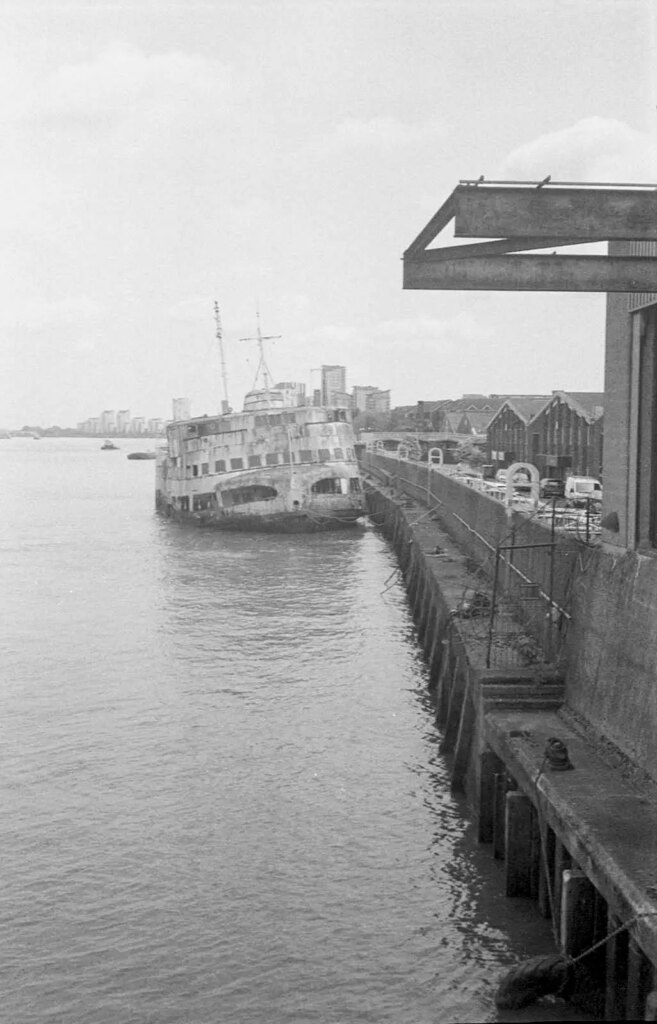
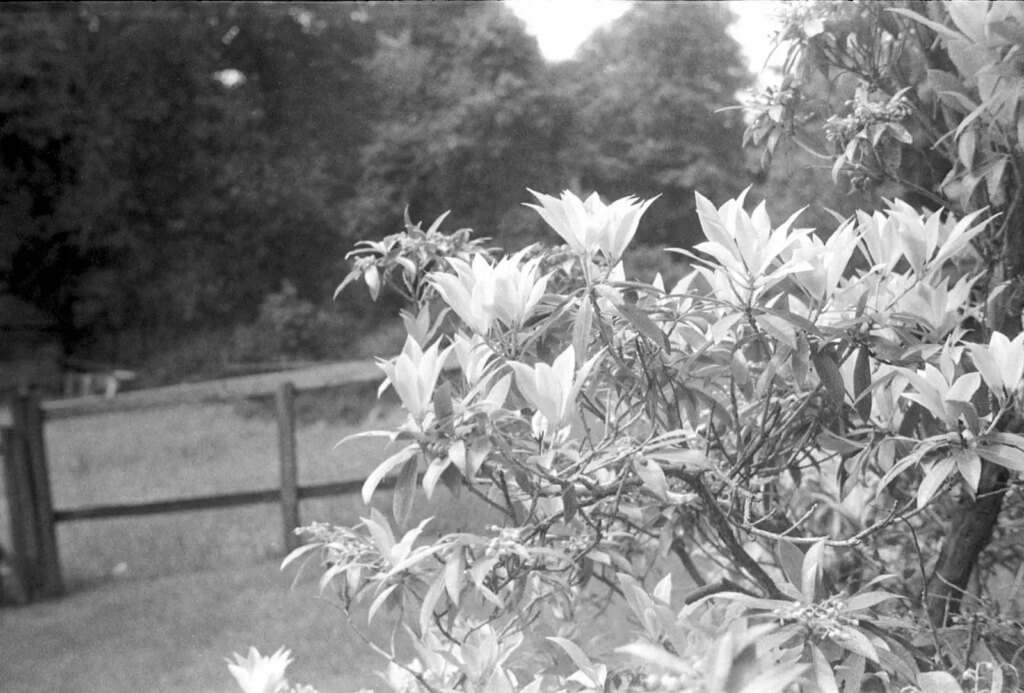
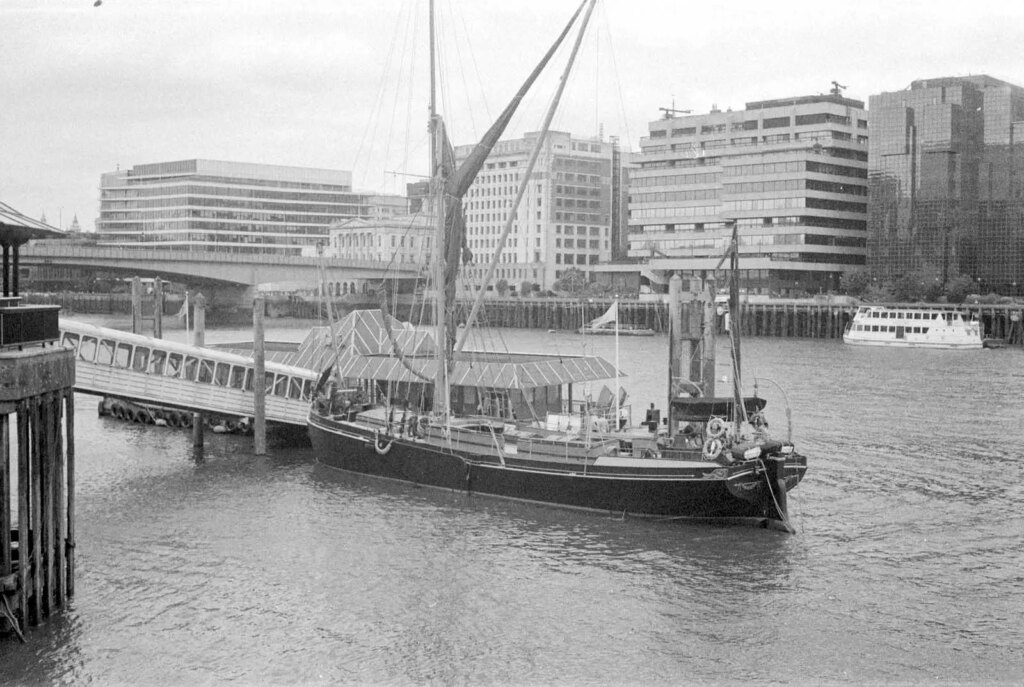
Conclusion
AGI went on to produce a follow-up to the Agimatic called the Agima. This had the same combined shutter release and wind-on and interchangeable lenses, but it also featured a coupled rangefinder. It had a bigger viewfinder with bright lines for the standard and telephoto lenses. It sounds like a highly practical camera, but it is rather ugly and is much rarer than the Agimatic. Braun had produced something very similar, which was also ugly and probably a complete coincidence.
AGI got out of domestic cameras in the 1960s. They also got out of Croydon, eventually relocating to Poole on the south coast of England. A lot of the emphasis seems to be on Maritime instruments these days, which may be one of the reasons behind their recent rebranding from AGI to Trident.
Braun also abandoned domestic cameras in the mid 1960s, concentrating on producing slide projectors. Shortly afterwards this class of little interchangeable lens leaf-shutter rangefinder compacts were blown away by 35 mm SLR system cameras from Japan.
Share this post:
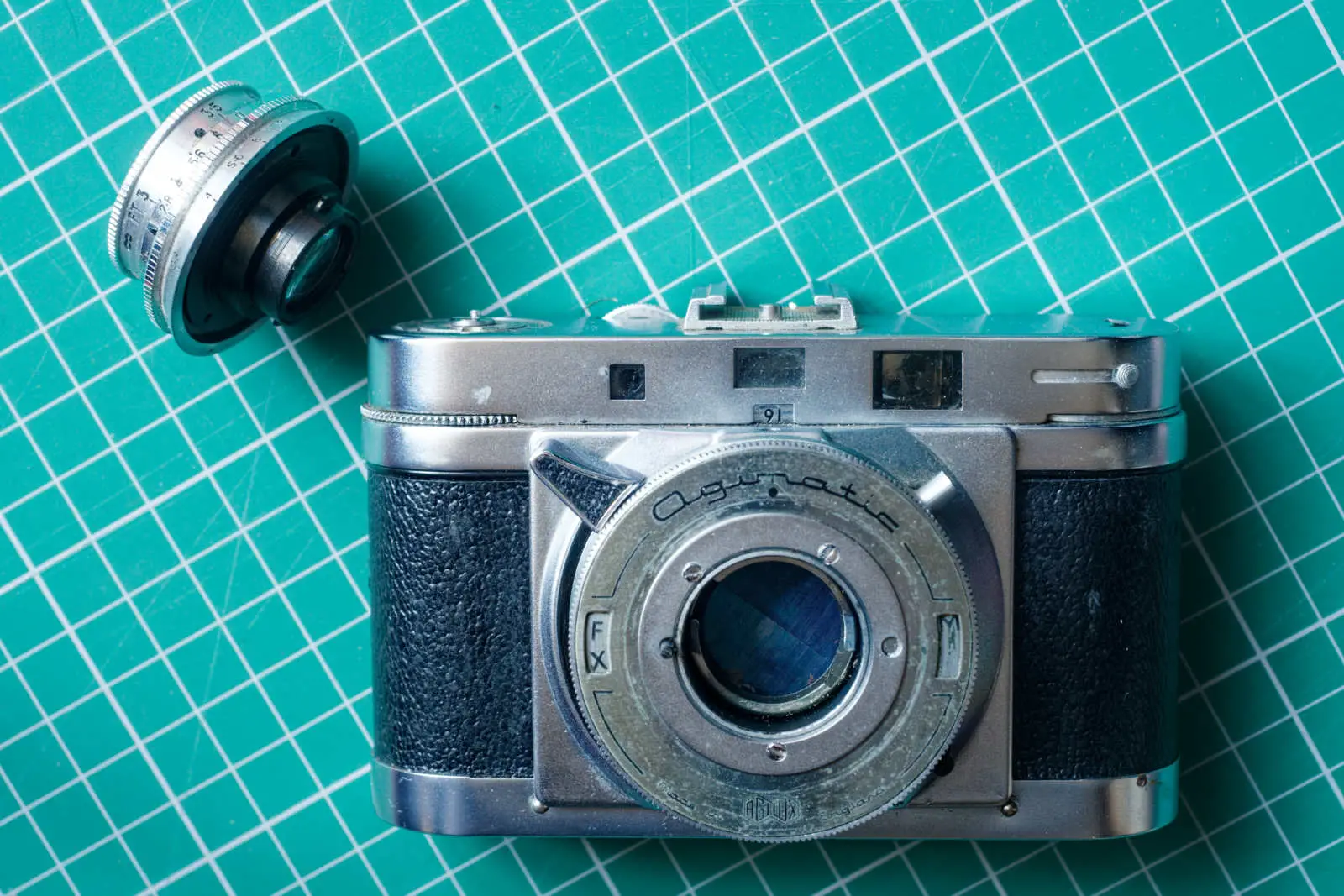








Comments
Paul Quellin on AGIMatic – an Innovative British 35mm Film Camera
Comment posted: 28/07/2023
Simon on AGIMatic – an Innovative British 35mm Film Camera
Comment posted: 29/07/2023
In my teenage years I had an Agilux Agima 35mm RF camera, a hand-me-down from a family friend. It stopped working after being covered in snow when I tumbled (harmlessly) down a steep slope during a school skiing trip in the Alps. The film advance / shutter-cocking was a bit quirky and I only had the 45mm lens but the RF focussing was at least an improvement on the blind guesswork required with a Werra 1 he also gave me. I certainly preferred both cameras' near-silent and efficient sounding leaf shutters over the focal plane shutter of my Olympus SLR (also given to me by the same fellow).
John Collins on AGIMatic – an Innovative British 35mm Film Camera
Comment posted: 30/07/2023
Scott Gitlin on AGIMatic – an Innovative British 35mm Film Camera
Comment posted: 30/07/2023